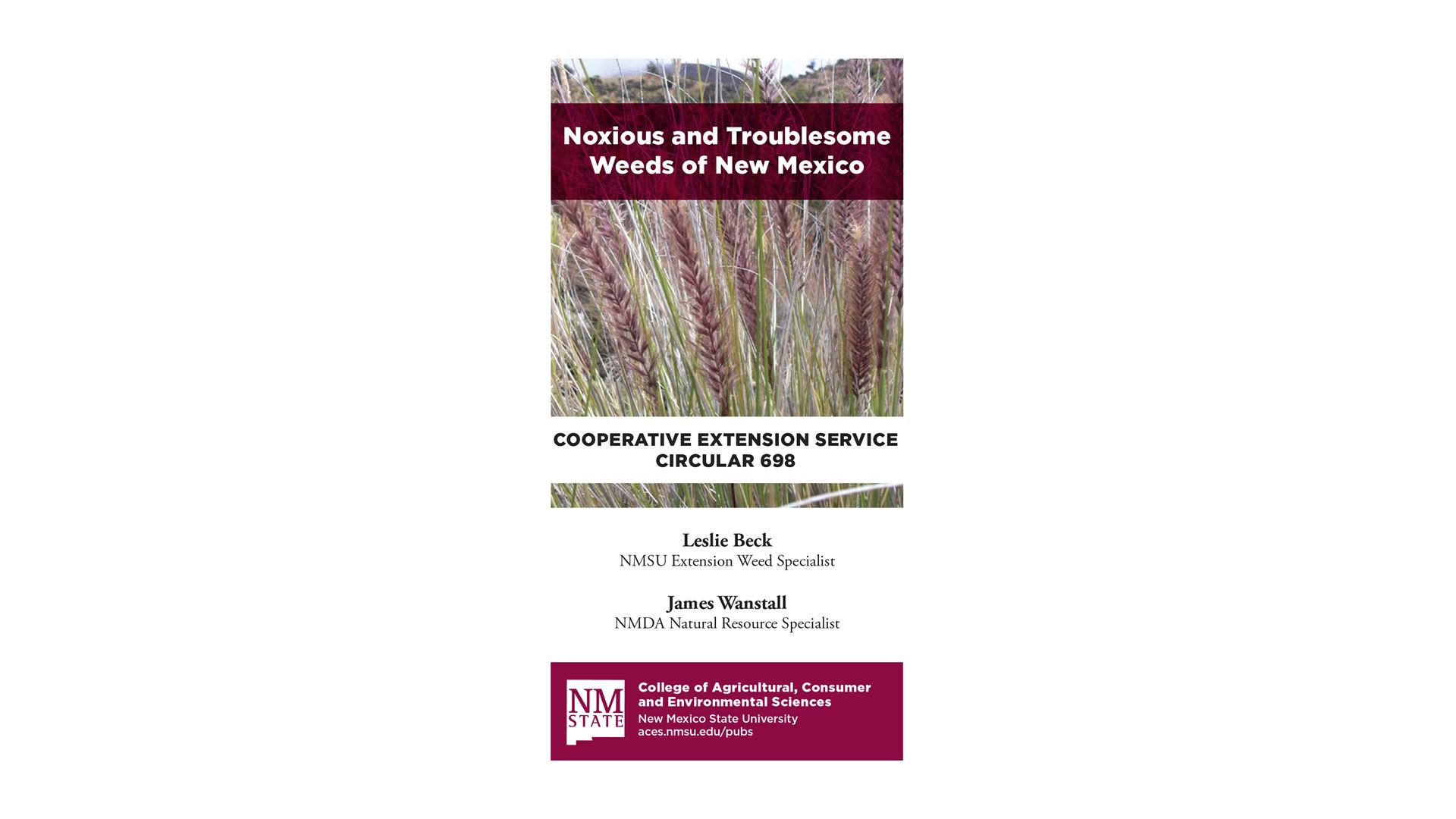The third edition of a booklet to help identify noxious and invasive weeds in New Mexico is now available.
“Noxious and Troublesome Weeds of New Mexico” provides information on about 67 plant species that are ranked in five categories – noxious weeds categories A, B and C, watch list, and troublesome weeds not included on the noxious weeds list.
New Mexico State University’s College of Agricultural, Consumer and Environmental Sciences Cooperative Extension Service has published the third edition of this booklet in cooperation with the New Mexico Department of Agriculture, Bureau of Land Management, U.S. Forest Service, New Mexico Vegetation Management Association, U.S. Department of Agriculture and New Mexico State Highway and Transportation Department.
“It has been more than a decade since the booklet was updated,” said Leslie Beck, NMSU Extension weed specialist. “We tried to include a wide spectrum of plants within different families so when people use the booklet, they will have a starting point for identification.”
The booklet includes species common and scientific name with description of the plant, including its stems, leaves and flower appearances; various names it is known as; how it reproduces; and the do’s and don’ts for managing the plants.
“The state map has been updated to indicate which counties each species is found,” Beck said. “Also we have included photos of each of the plants to help with the identification.”
First published in 2006, and revised in 2010, “Troublesome Weeds of New Mexico” has been a popular tool for identifying the plants.
“Since the last revision a lot of the species have shifted into new noxious weed categories, or the plant may have been taken off or added to the list,” Beck said.
The 41 noxious species are divided into three categories in regards to how prevalent they are across the state from currently limited distribution, to severe infestation, to widespread.
Six species that have the potential of becoming problematic are on the watch list.
“This is the part of the publication that has changed the most,” Beck said. “More data is needed to determine if these species should be considered a problem. We ask people to document the location of these plants and contact appropriate authorities, such as their local county NMSU Extension offices or NMDA.”
In addition to the noxious weed and watch list species, the 2021 edition includes 20 species that are considered troublesome weeds.
“These are plants that have been commonly observed as invaders of multiple cropping systems, such as landscapes, gardens, agriculture, rangelands and pastures,” Beck said. “They may be native to the Southwest but commonly invade certain cropping systems as a weed.”
This list does not include every plant species with the potential to negatively affect the state’s environment or economy.
“These species were selected because they have frequently been sent to me for identification,” Beck said. “Some of them are a little bit more common than others.”
The PDF version of the publication is available at https://aces.nmsu.edu/pubs/_circulars/CR698.pdf. A printed copy of the booklet, sized to fit in a back pocket, will be available soon.

